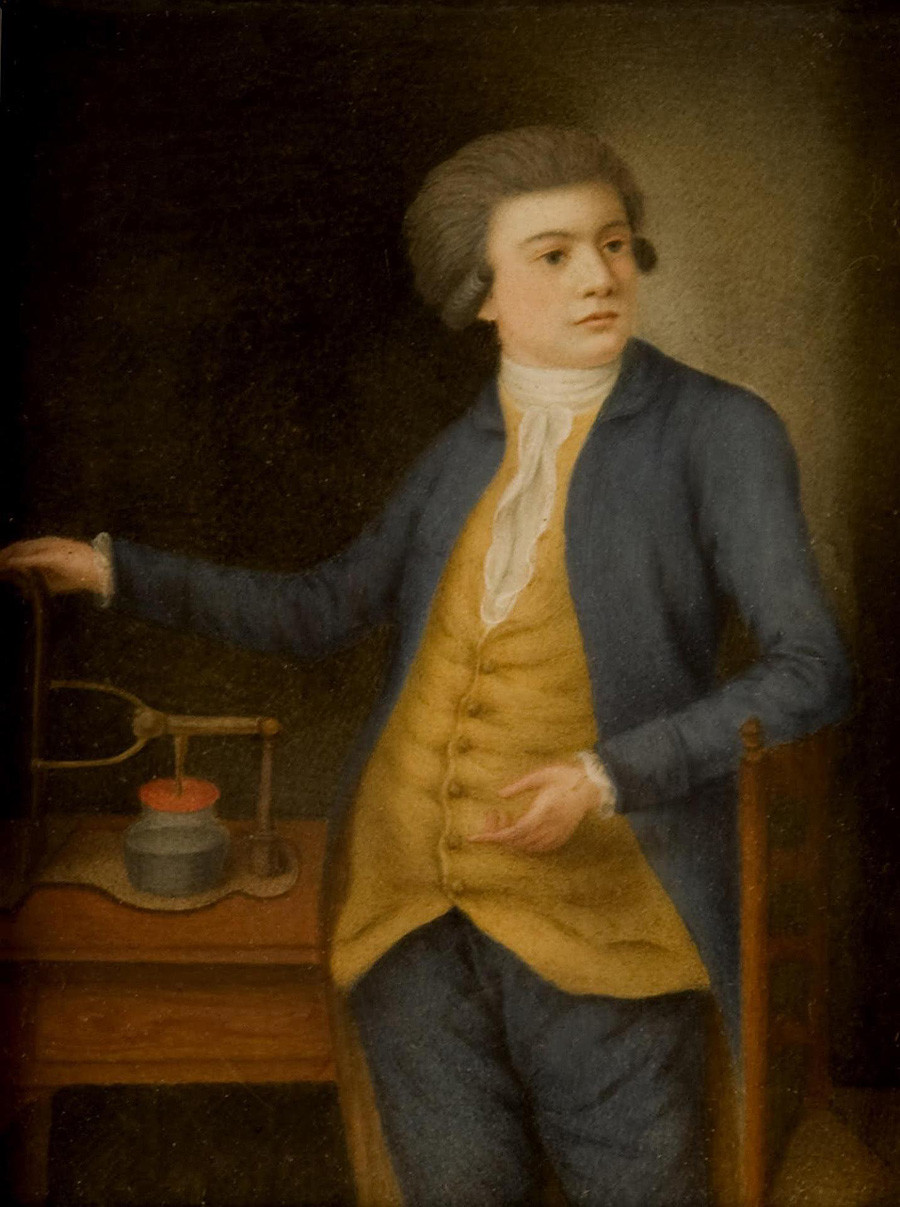Suffering for art: Why did a Russian physicist cut off the skin on his fingertips?

Professor Vasily Petrov
Hermitage MuseumThe professor does not leave his laboratory for many hours; he does not speak with his colleagues. Sometimes people see him leaving the dark, apparatus-filled laboratory with bloodied fingers. “He’s mad, obsessed. Why is he doing this?” his colleagues whisper in the corridors. Several days later the wounds are covered with scabs, but as soon as they heal, the skin is again cut off…
“It’s just an experiment with electricity, nothing dangerous,” the professor tells himself. His laboratory is so famous throughout Russia that people are more curious about it than Vasily Petrov himself. No one in the Academy says anything good about him: “Another one of Vasily Petrov’s publically demonstrated experiments ends in scandal.”
“I hope that at least enlightened and impartial physicists will one day agree to
He worked during the 18th and 19th centuries - and the above was the drama that unfolded at the Physics Department of St. Petersburg’s Medical-Surgical Academy. The professor who cut the tips of his fingers off was remembered only a century later - and it turns out he was onto something.
He sacrificed his fingers
Born in 1761 into a family of a preacher, Petrov studied at home under the strict supervision of a church school. He entered the Collegium (the school of higher sciences) but did not graduate. He enrolled in the Teachers’ Seminary, but also abandoned it after deciding he was ready for teaching.
No one complained about Petrov’s insufficient education. For five years he successfully taught physics and mathematics at a provincial school in Altai, and at the end of the 19th century moved to the capital, St. Petersburg. Afterwards, he spent 41 years making brilliant scientific discoveries at the Academy’s Physics Department that were not truly recognized during his life. In fact, they were forgotten for many years after his death.

Possible portrait of Petrov
Hermitage MuseumHe was respected, however, for his laboratory. Custom-made equipment would be brought in on sleighs from every corner of the country and he would generously share his apparatus with his colleagues. He would also obsessively conduct experiments without leaving the lab.
At the beginning of the 19th
An outcast of the academy
But this discovery, just like the others, failed to bring him anything. Among other
Moreover, several years later the voltaic arc discovery was attributed to Sir Humphry Davy from England, who had presented the phenomenon to the Royal Society in London and, unlike Petrov, sparked global excitement.
Some sources say that after Petrov resigned in 1833 he was bizarrely given an incredible pension of 5,000 rubles a year ($43,400 in today’s money). But after his
If using any of Russia Beyond's content, partly or in full, always provide an active hyperlink to the original material.
Subscribe
to our newsletter!
Get the week's best stories straight to your inbox